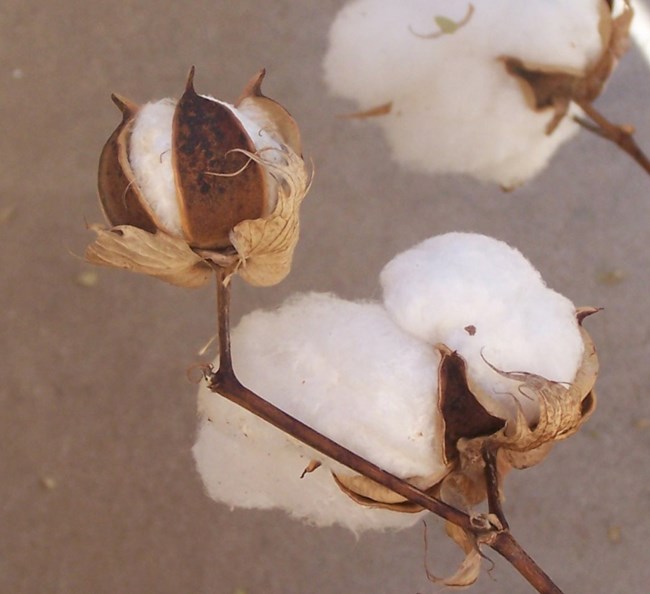
NPS Farming in this part of Arizona started 4,100 years ago with corn. Little by little, over the centuries, travelers brought in beans, squash, gourds, pumpkins, tobacco, and cotton. People here gradually dug a vast network of canals to take water from the rivers into their fields. Communities living along the miles of ditches worked together to maintain their irrigation system. The first Spaniards who visited the Casa Grande in the late 1600s noticed that people here grew cotton. Cotton thrives in hot climates, but it is a very, very thirsty crop. Without irrigation, cotton won't grow in a desert. Today the farm fields near Casa Grande Ruins are still one of the largest cotton-producing areas in the United States. Irrigation still makes desert farming possible. Long-Range Trade and Travel Farmers living near the Casa Grande traded cotton and surplus crops for raw materials and other goods. Copper bells and scarlet macaws came up from the south. Turquoise and obsidian came here from the north and east. People in southern Arizona journeyed to the Sea of Cortez and to the Pacific, returning with sea shells. They fashioned their shells into beautiful bracelets, rings, and pendants. 220 Miles of Canals Near Casa Grande Ruins, the Ancestral Sonoran Desert People irrigated as many as 19,000 acres of crops. Earliest canals built —3,500 years ago A PDF of the wayside (44,375 KB) is available.
|
Last updated: March 18, 2024
